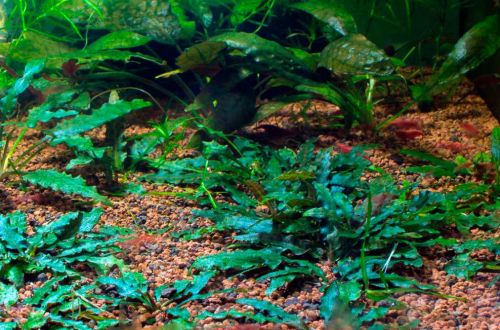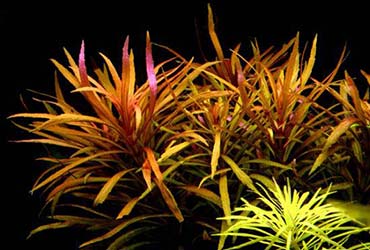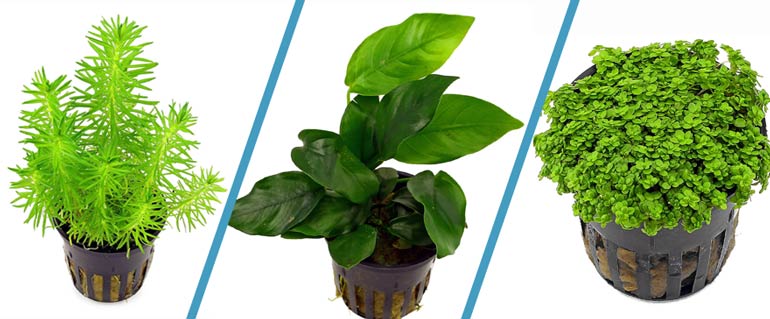
How to properly prepare plants before planting in an aquarium
To begin with, it is worth noting that the introduction of live plants into the aquarium can carry certain risks for its inhabitants, since aquatic vegetation is a potential carrier of unwanted “guests”, which are very problematic to remove. These can be snail larvae and eggs, dangerous parasites, algae and their spores, as well as residues of fertilizers and other chemicals used by some sellers to preserve the presentation of the plant before sale.
If there are no difficulties with cleaning artificial decor elements, for example, soil, stones and ceramics can even be treated with boiling water, then live vegetation should be treated much more delicately. Due to the fact that it is almost impossible to completely remove all contamination from them, it is necessary to minimize the risks by purchasing the plant from reliable sources. These include specialized pet stores that cooperate with or purchase products from trusted nurseries, for example, Tropica from Denmark, Dennerle from Germany, Anubias from Italy and others.
An alternative source can be experienced local aquarists who will either be ready to share their plants themselves or tell you where they can be purchased in your city.
Contents
Preparing aquarium plants
Further, we will mainly talk about those plants that are supplied to the distribution network from commercial nurseries, since for the purposes of transportation and storage they are specially preserved in order to arrive at the buyer in the best possible way. Plants from other aquarists practically do not require preparatory work and are ready for planting in a new aquarium.
Plants in pots
Rosette plants in pots
 Rosette plants in pots with synthetic substrate supplied from commercial nurseries
Rosette plants in pots with synthetic substrate supplied from commercial nurseries
Potted plants are usually grown in nurseries in containers with special rooting material instead of soil, resembling dense synthetic wool. With the same material, they are placed in plastic pots. “Wadding” from the roots should be removed before planting.
For rosette and stem plants, the procedure is as follows:
Preparation of rosette plant. Stage one
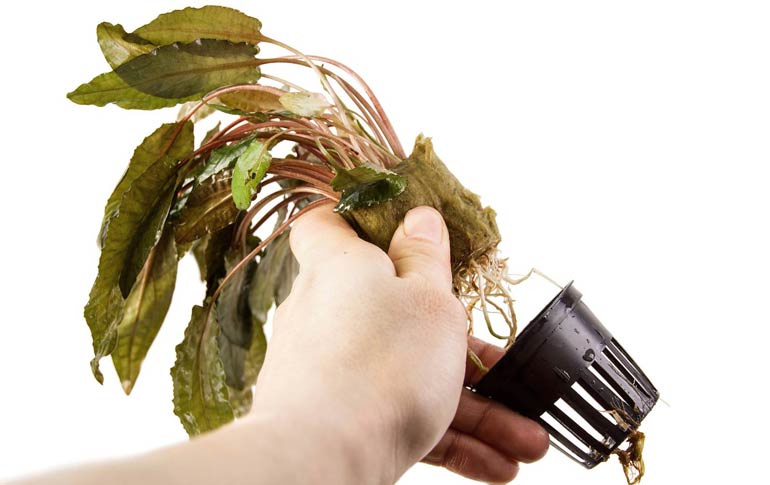 A plastic pot is removed from the synthetic substrate of the rosette plant.
A plastic pot is removed from the synthetic substrate of the rosette plant.
First, the pot is removed to free the material itself.
Preparation of rosette plant. Stage two
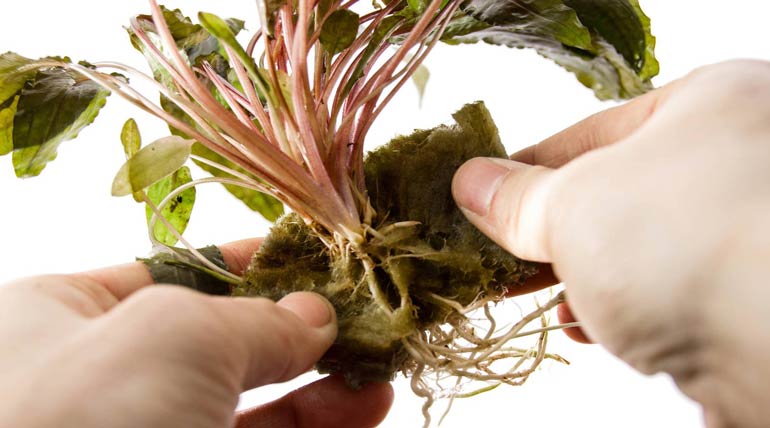 The roots of the rosette plant are freed from large fragments of the synthetic substrate.
The roots of the rosette plant are freed from large fragments of the synthetic substrate.
Then you can remove the main part of the “cotton wool” with your hands.
Preparation of rosette plant. Stage three
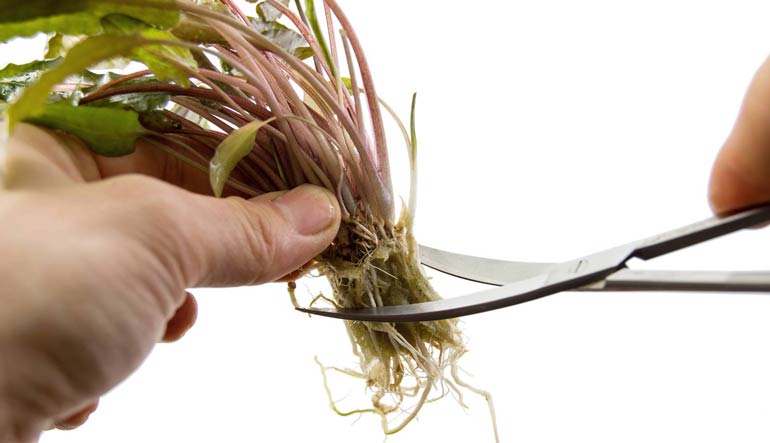 Scissors cut off part of the old roots of the rosette plant
Scissors cut off part of the old roots of the rosette plant
At the next stage, it is necessary to cut off the lower part of the roots with scissors, leaving about 2 cm. Some plants have main roots (rhizomes) or tubers, they must not be touched!
Preparation of rosette plant. Stage four
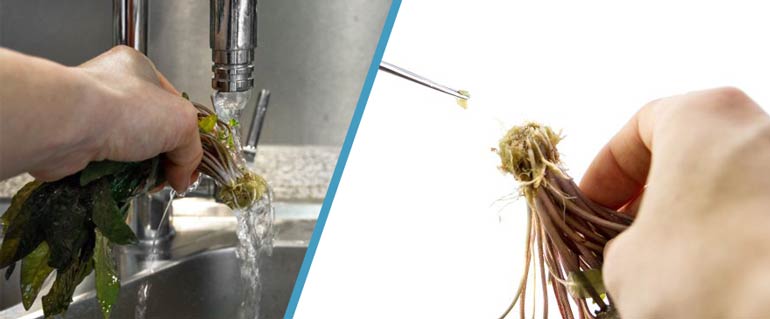 The plant is washed under running water and the remains of the synthetic substrate are removed from the roots.
The plant is washed under running water and the remains of the synthetic substrate are removed from the roots.
The remains of “cotton wool” are washed under running warm water and removed with tweezers.
Splitting a bunch of rosette plants
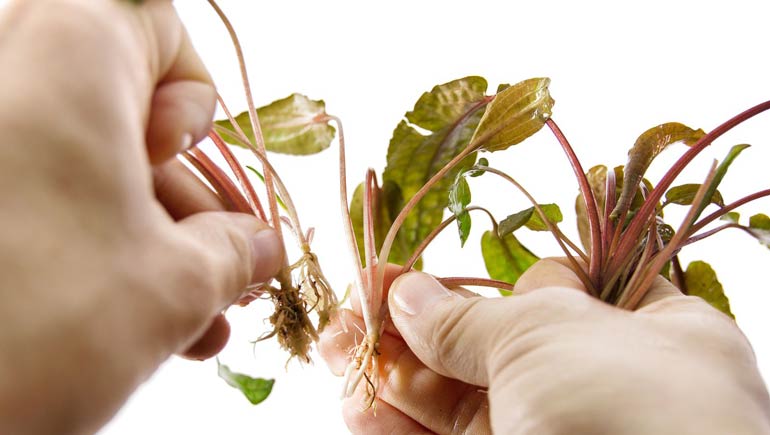 A bunch of rosette plants is divided into individual sprouts
A bunch of rosette plants is divided into individual sprouts
Often several bushes of rosette plants are placed in one pot, which can be more or less freely divided, thus obtaining several independent sprouts.
Preparation of “carpet” plants
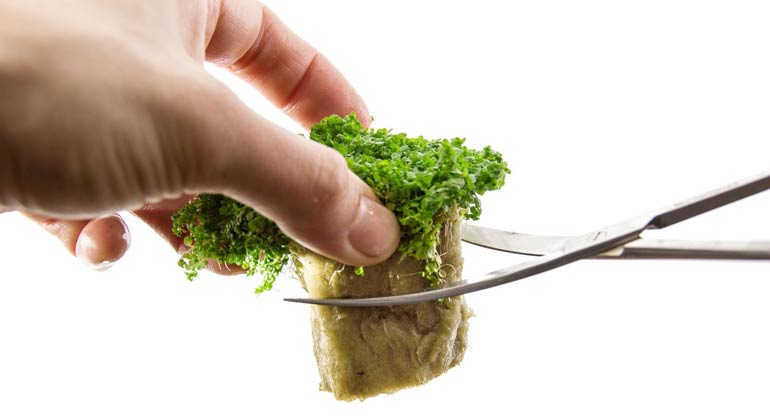 Scissors cut off about half of the synthetic substrate, in which there are undersized “carpet” plants
Scissors cut off about half of the synthetic substrate, in which there are undersized “carpet” plants
For soil undersized plants, such as Hemianthus Cuba and Glossostigma povoynichkova, which form dense thickets like a lawn or “green carpet”, a different method is used. For them, it is advisable to leave part of the “cotton wool”, cutting off half with scissors. The rest will become a kind of anchor for fixing.
Separation of a bunch of “carpet” plants
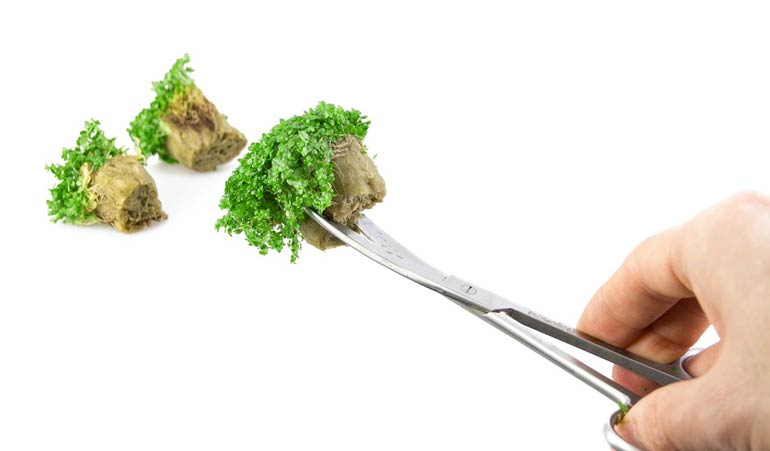 A bunch of undersized “carpet” plants is divided with scissors into small fragments
A bunch of undersized “carpet” plants is divided with scissors into small fragments
The bush can be divided into several smaller fragments, which will facilitate future planting.
Mosses and ferns
Mosses and ferns in containers
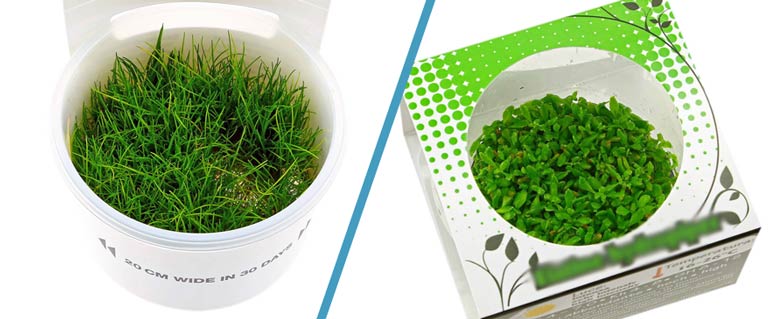 Appearance of ferns and mosses in plastic containers supplied for sale from commercial nurseries
Appearance of ferns and mosses in plastic containers supplied for sale from commercial nurseries
Without a root system, mosses and ferns are supplied in ordinary plastic containers without a substrate. For preservation, they are sprayed with a special concentrate of nutrients. Reputation-conscious nurseries use absolutely safe substances. However, in some cases, “fertilization” can lead to an overgrowth of a colony of bacteria involved in the nitrogen cycle, which in turn can disrupt the established biological balance in the aquarium. To avoid a negative scenario, moss or ferns are washed in running water at room temperature.
Preparation of mosses and ferns
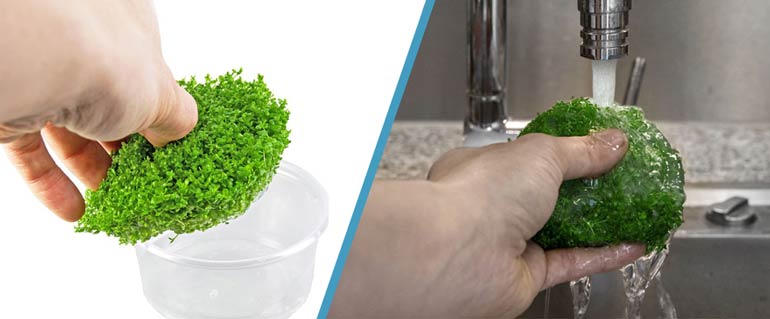 Aquarium moss is washed under running water to remove fertilizer residues.
Aquarium moss is washed under running water to remove fertilizer residues.
An alternative is to place the vegetation in a container filled with aquarium water for a few hours. During this time, all fertilizers will be washed away.
Separation of moss into separate bunches
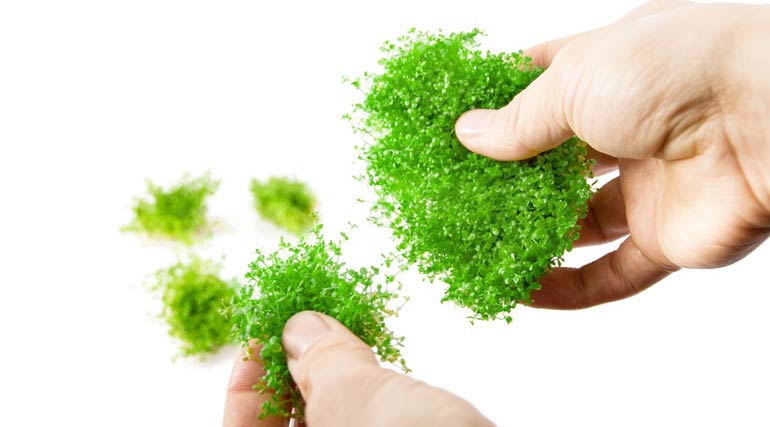 The accumulation of aquarium moss is divided into separate small bunches
The accumulation of aquarium moss is divided into separate small bunches
Due to its structure, the accumulation of mosses and ferns is easily divided into pieces, which will be useful during planting.
Mosses on a mesh basis
Aquarium moss on a metal mesh
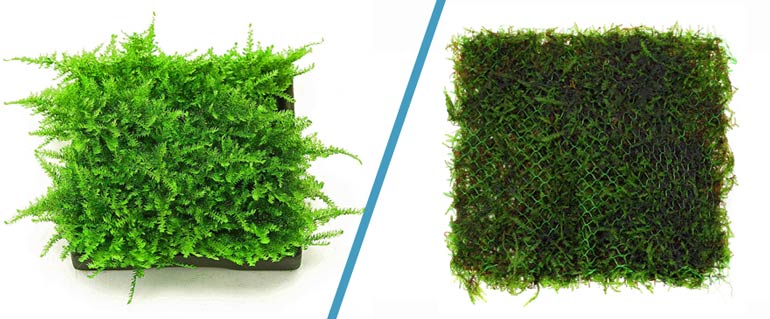 Aquarium mosses from commercial nurseries supplied on a ceramic base with metal mesh
Aquarium mosses from commercial nurseries supplied on a ceramic base with metal mesh
Some nurseries, such as Tropica or Dennerle, grow aquatic mosses on special metal stainless nets with a ceramic pad. In the same form they are supplied for sale.
Placement of moss with metal mesh
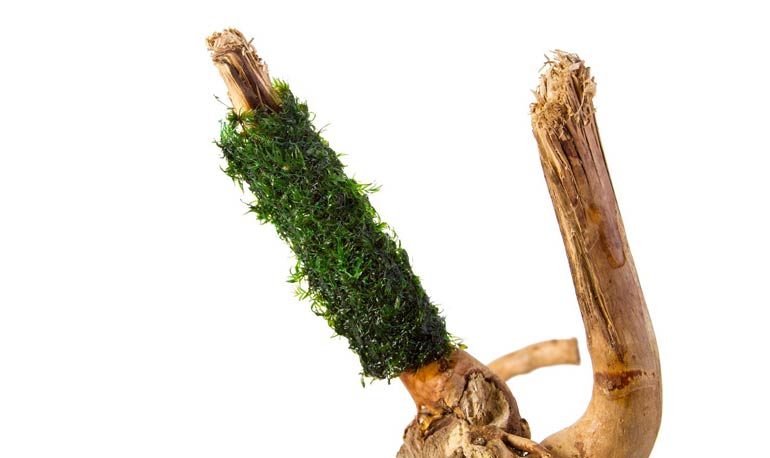 Fixing a metal mesh covered with moss on the surface of a driftwood
Fixing a metal mesh covered with moss on the surface of a driftwood
The flexible grid provides ample opportunities for design. For example, they can be wrapped around snags or stones, placed in the right place in the aquarium. If there is no need for a grid, then it is enough to wait until the moss grows and separate the desired portion, and remove the base.
floating plants
Preparing floating plants
 Floating plants are placed on the surface of the water and long hanging roots are trimmed.
Floating plants are placed on the surface of the water and long hanging roots are trimmed.
Probably the easiest to prepare. After purchase, it is enough to rinse them and, if necessary, divide them into bushes, if there are several of them in one batch. In some cases, in some plants (Limnobium shoot-bearing, Salvinia and others), it is advisable to trim too long hanging roots.



